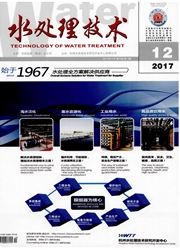

 中文摘要:
中文摘要:
研究了不同条件下,Cd(II)对纳米二氧化钛在水体中沉降性能的影响。结果表明,在不同p H、离子强度以及腐殖酸(HA)条件下,Cd(II)均能促进纳米二氧化钛颗粒沉降,且颗粒的沉降性能与Cd(II)含量、离子强度成正相关,与p H及HA含量成负相关。Cd(II)、p H、离子强度以及HA均能改变纳米颗粒的表面电性,进而改变纳米颗粒间的能量壁垒,影响纳米颗粒在水体的沉降性能;而Cd(II)还可通过“桥联”或络合作用,促进纳米颗粒的聚集沉降。水体中共存的重金属可显著增加纳米二氧化钛的沉降,改变其迁移能力,进而可能影响其环境风险。
 英文摘要:
英文摘要:
This work investigated the effects of Cd(II) on the stability of Nano-TiO2 particles in the aquatic environment under the different environmental conditions. The results showed that Cd(II) significantly decreased the stability of Nano-TiO2 particles in different pH, ionic strength and humic acid. The sedimentation of Nano-TiO2 particles was positively related to the concentration of Cd(II) and the ionic strength, but it was negatively correlated with the pH and humic acid concentration. The Cd(ll), pH, ionic strength and laumic acid could change the surface electrical properties of nanoparticles the energy barriers ofnanoparticles, then affected the sedimentation of Nano-TiO2 particles. Cd(II) could promote the nanoparticles sedimentation through the "bridging" or complexation, affecting the sedimentation behavior of nanoparticles in water. The coexistence of heavy metals in aquatic environment could significantly increase the sedimentation kinetics of Nano-TiO2 particles, which might affect the ecological risk of Nano-TiO2.
 同期刊论文项目
同期刊论文项目
 同项目期刊论文
同项目期刊论文
 期刊信息
期刊信息
